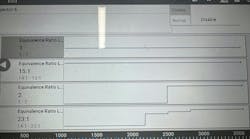In collaboration with Defiance Stamping Company, Rather Engineering will introduce an innovative method of installing light amounts of controllable and repeatable preload in trailer wheel-end systems.
This will occur during the 2014 Technology & Maintenance Council (TMC) tmc.trucking.org Annual Meeting & Transportation Technology Exhibition, March 10 to 13, 2014, in Nashville, TN.
The method will be demonstrated at Booth #219. There will be an axle to allow attendees to assemble a newly-developed spindle nut system that has the capability of confirming a maximum performance level of preload, says Rather Engineering’s Al Hagelthorn.
A primary objective is to demonstrate a reliable system to the committee members of the TMC S.6 Chassis & Brake Systems Task Force who are currently considering development of a new TMC Recommended Practice that would offer guidance in how tapered roller bearings on commercial trailers can be adjusted with controlled preload, he notes. A secondary objective is to offer all maintenance personnel in attendance a hands-on opportunity to learn how controlled preload can be easily installed with conventional tools.
In the past, the standard practice has been to assemble wheel-end systems with measurable end play (looseness) in accordance with TMC Recommended Practice 618, Wheel Bearing Adjustment Procedure, explains Hagelthorn. Endplay is acceptable only if restricted to a minimal amount of lateral hub movement on the axle spindle.
“Excessive endplay will contribute to deterioration of the oil seal and a subsequent loss of oil from the hub assembly,” he adds. “Abnormal tire wear is also associated with excessive end play so it is important to consider potential solutions to avoid those problems.”
Providing controlled preload will eliminate the disadvantages of end play. However, it is not without risk.
“It is essential to limit preload to a low level of force because rolling resistance (drag) begins to increase proportionally as preload force is applied,” says Hagelthorn. “Too much preload force is unacceptable because elevated operating tempers within the hub assembly will occur.
“The resulting heat can become so intense that the tapered roller bearings may sustain damage. This may lead to a separation of the hub and wheel assembly from the axle such as happened in many instances in the past.”
Previously, preload has not been acceptable because it was not possible to control or to measure how much preload had been installed,” he observes. “However, with a newly patented spindle nut design, along with improved methods conceived by Rather Engineering, low levels of controlled preload can be accurately applied to assure exceptional performance with improved reliability.
For more information, contact Hagelthorn at [email protected] or 775-686-8000.

